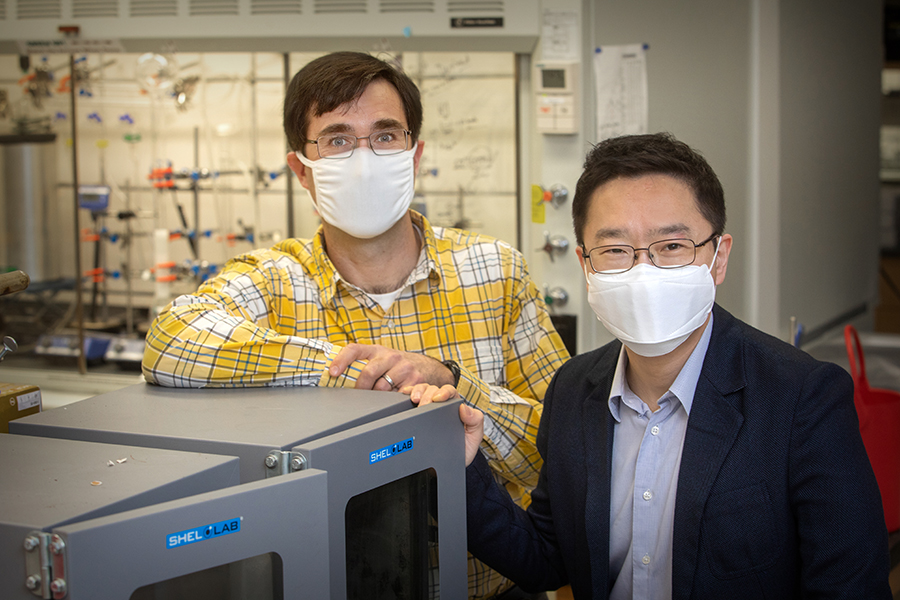By: Bill Wellock | Published: | 2:08 pm | SHARE:
A Florida State University research team has developed a way to use a material found in plants to help create safer batteries.
Using the organic polymer lignin — a compound in the cell walls of plants that makes them rigid — the team was able to create battery electrolytes. Their research was published as the cover article in the journal Macromolecular Rapid Communications.
“The main battle in battery science is in new materials,” said Hoyong Chung, an assistant professor of chemical and biomedical engineering in the FAMU-FSU College of Engineering and the study’s corresponding author. “Depending on what kind of material we use, we can improve the capacity of the battery and the safety of the battery substantially.”
To create their new type of solid electrolyte, the team combined lignin with the synthetic polymer polyethylene glycol.
Electrolytes are a battery part that separate the negative and positive terminals of a battery. They conduct ions, which match the flow of electrons moving from a negative to positive terminal and through whatever the battery is meant to power.
Electrolytes can be either liquid or solid, and each type has its strengths and weaknesses. Liquid electrolytes are good conductors of ions, but solid electrolytes are typically safer, stronger and can be used at higher temperatures than liquid versions.
Polyethylene glycol is a popular candidate for solid electrolytes because of its electrochemical stability, but it doesn’t conduct well at room temperature, which limits the abilities of batteries using that material to power something or to rapidly charge.
That’s where lignin comes in.
Lignin’s chemical structure contains high concentrations of derivatives from a compound called benzene, which makes it a strong material. By using lignin as an electrolyte component, the battery keeps the strength and safety that comes with a typical solid electrolyte but gains the ability to function well at room temperature.
Along with increasing the range of temperatures at which a solid electrolyte battery is feasible, using lignin is a way to make batteries more sustainable.
Lignin is cheap and abundant. About 50 million tons are produced each year globally, and most of that is a waste product from the paper industry. Unlike other biomass materials, it’s not a human food, so it couldn’t be otherwise used to feed people.
“This is a way to improve battery performance and to do so in a sustainable way,” Chung said. “Batteries will be even more important in the future, so improving their technology is crucial.”
Daniel Hallinan Jr., FAMU-FSU College of Engineering associate professor and co-corresponding author; former graduate student Hailing Liu; and former graduate assistant Logan Mulderrig contributed to this work. This research was supported by the National Science Foundation and Florida State University’s Energy and Materials Hiring initiative.
